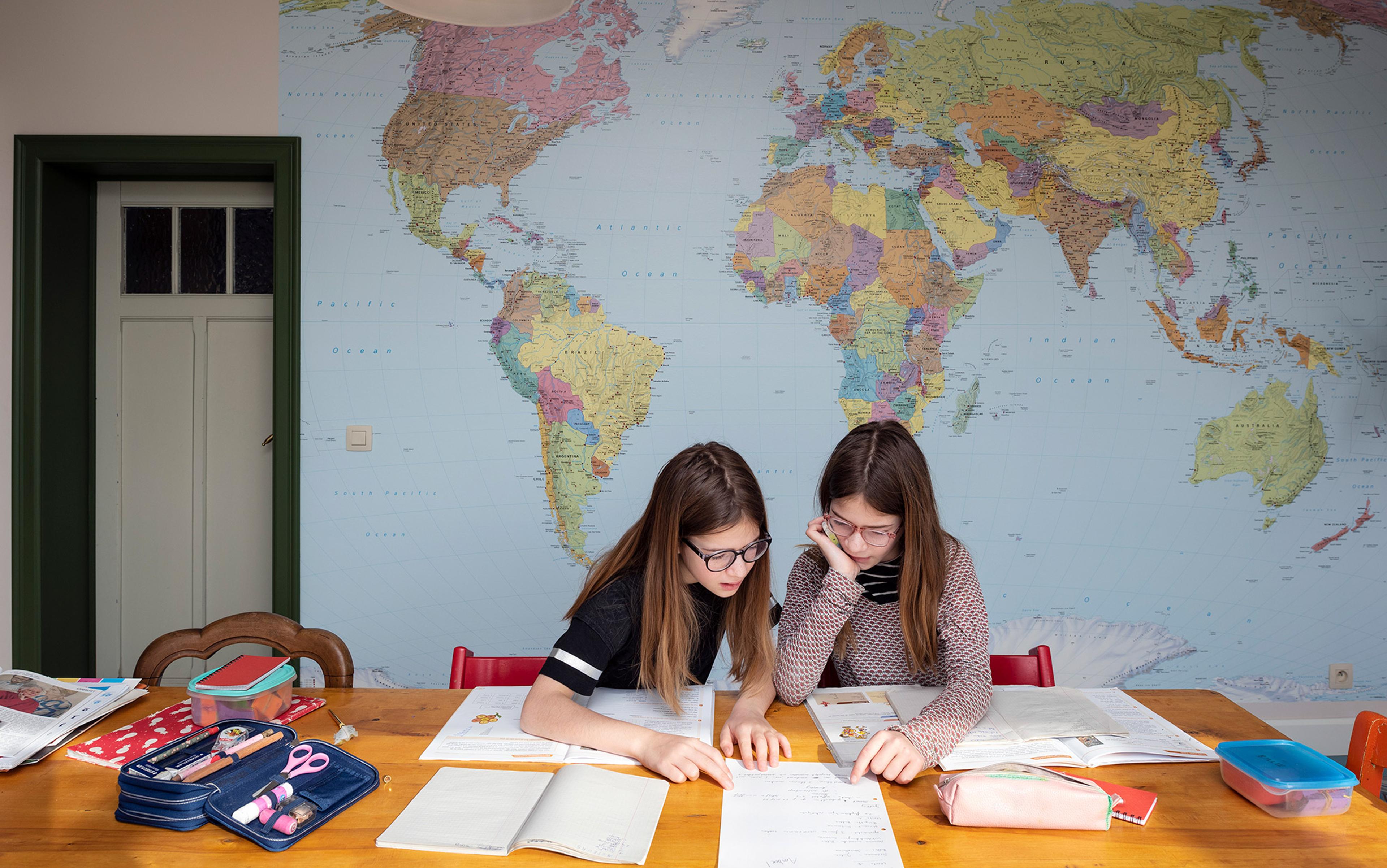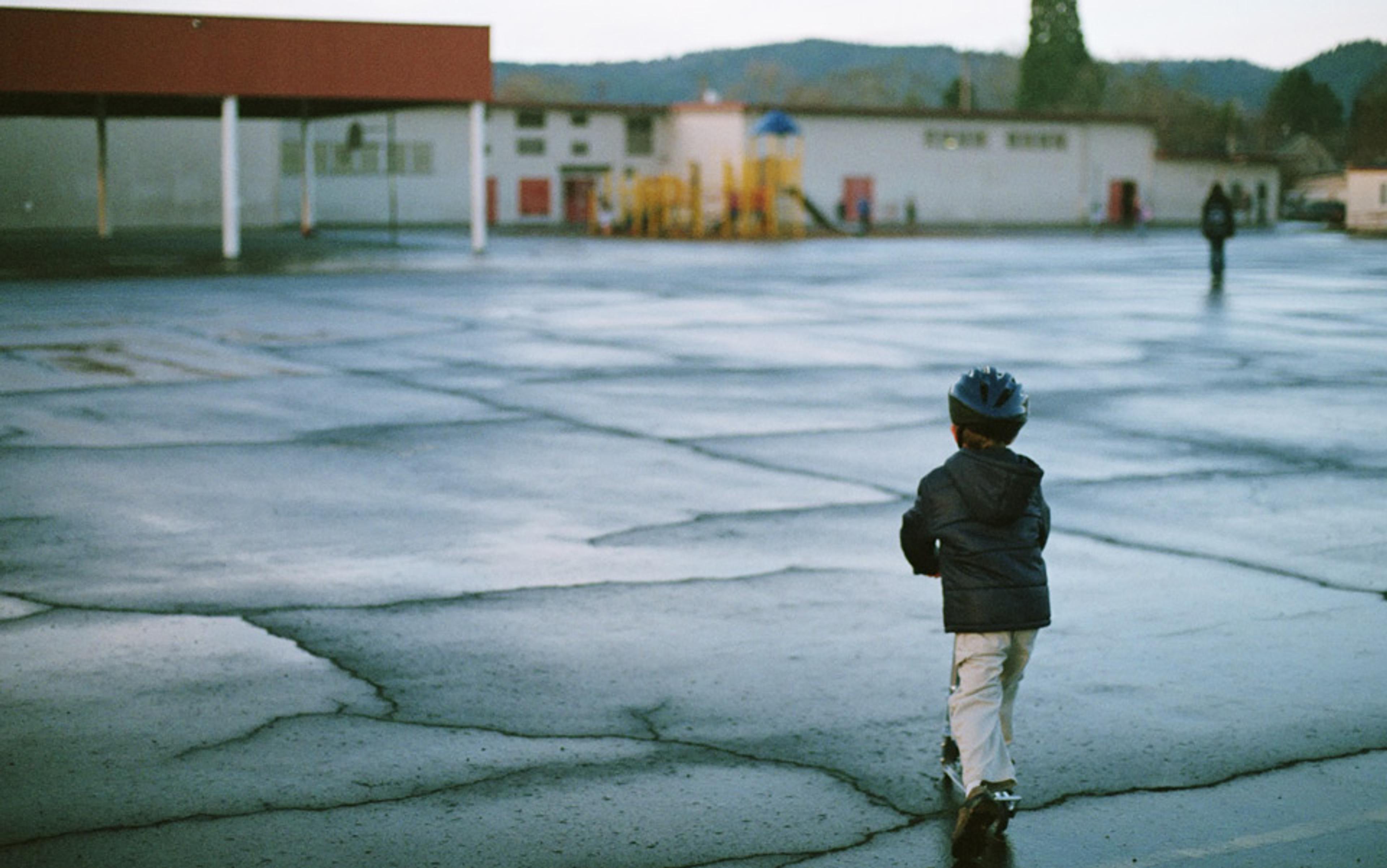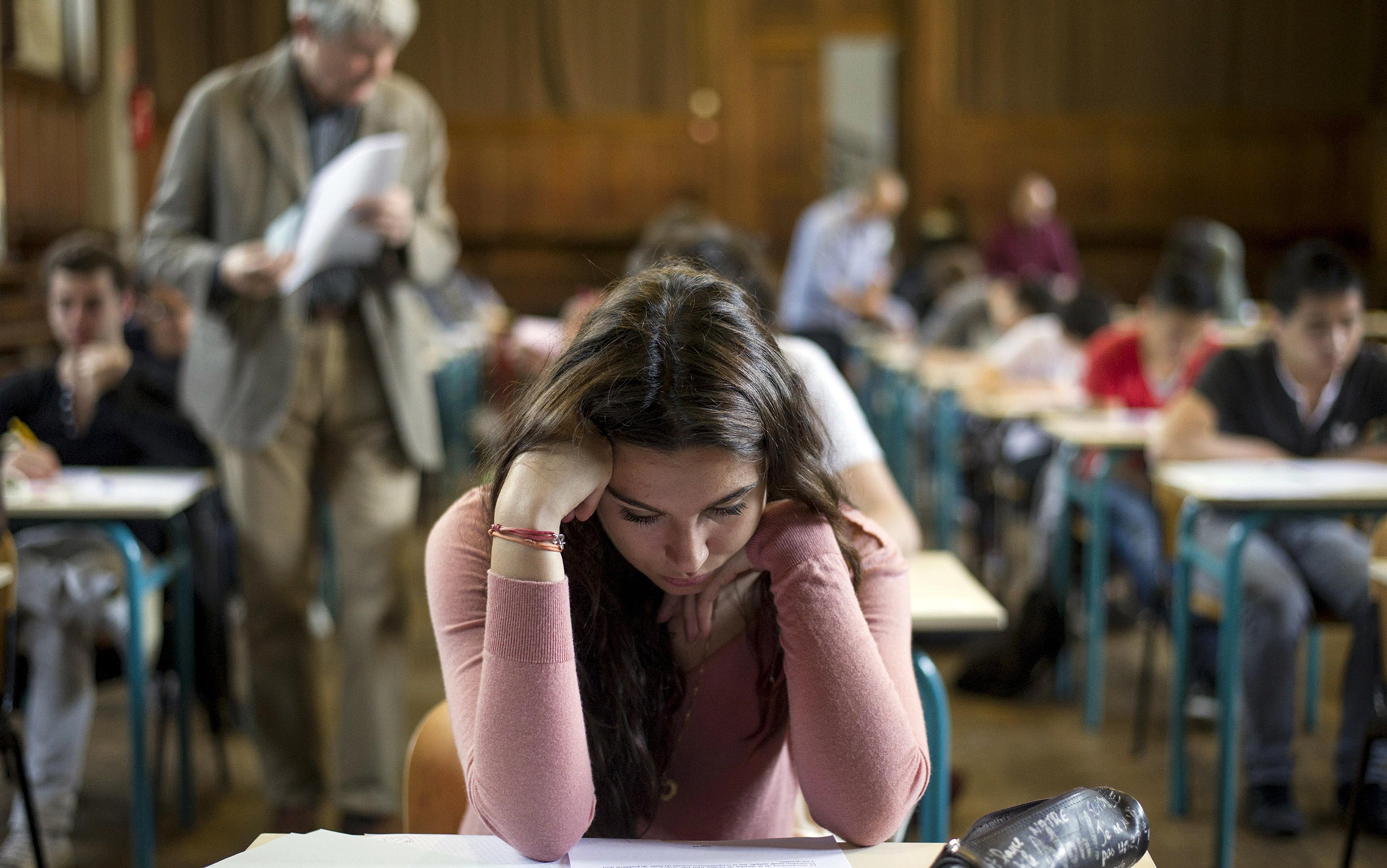Peter was seven when his mother decided that enough was enough. Emma had spent years trying to support him to attend school. He’d started early on refusing to go, and she’d taken the school’s advice, which was to make him go. She became upset when discussing it: ‘They were literally taking him off me kicking and screaming. We live seven minutes’ walk from the school, but it would sometimes take 20 minutes, half an hour, to get there. Looking back, I just feel the guilt. It probably will never leave me, knowing what I know now. At the time, I didn’t have the confidence to self-advocate, for me, and for him. I was just assuming that this is what you have to do.’
Emma had been sure that something was wrong, but the school saw the problem as Peter’s lack of discipline. When she went to school to ask for help, ‘They were very much like: “We know children. We’re telling you how it is. You’re just the parents, you don’t really know what you’re talking about.”’
Within the first term, Peter kicked the teacher. ‘They called us and said: “You need to teach him not to kick.” I asked what kind of consequences there were, and they said: “We’ll call the police if he doesn’t stop it.”’
Peter has diagnoses of bilateral hearing loss from birth, along with autism and attention-deficit hyperactivity disorder (ADHD) from the UK’s National Health Service when he was four. His parents paid for a private occupational therapy assessment, which found that he had sensory processing disorder. Despite these diagnoses, the school insisted that they had no concerns and did not support his parents’ application for an education, health and care plan (EHCP) – the UK equivalent of an individualised education programme (IEP) in the US. The school saw the problem as Peter’s ‘bad behaviour’, not a sign of how challenging he found the school environment.
Emma watched, helpless, as her son’s behaviour got worse. She knew this was distress, but the school did not see it that way. They thought he was disruptive and needed more discipline. She could see her son’s intense anxiety and how he expressed that through his behaviour. No one was listening.
‘It was horrendous. I can’t even describe how awful it was, being called in every day. He was disruptive in the classroom, attacking the children. They would say it was unprovoked. I’m like: “No, no, no. It’s not unprovoked. You might not understand but, in his mind, there’s a reason why he’s lost the plot.”’
We hear lots of stories like Emma’s, and we have a particular interest in how children learn outside of school. We educate our own children outside the school system. And we work with parents of neurodivergent children – those who often get diagnoses of neurodevelopmental differences such as autism, ADHD, dyslexia, dyspraxia (differences in coordination) or dyscalculia (specific differences in numerical understanding), often in need of learning beyond the school environment. While some schools do a great job with their neurodivergent students, these places can be hard for parents to find, and may be private and costly.
One of us, Heidi Steel, works as a parent coach for home-educating parents. The other, Naomi Fisher, is a trauma therapist who works with parents and young people. We both see children and families who are traumatised by their experiences at school. These are young people who find the environment of school so stressful that it can stop them from learning. They often show this distress through challenging behaviour, and they are then punished for this. Our work involves helping them and their parents recover and find new ways to learn.
When school doesn’t work, families can become despondent and filled with dread that no other pathway exists for their children to succeed. But children can thrive outside the school system, and don’t need to replicate the things about school that made learning so hard.
Children aren’t blank slates. The same approach doesn’t work for all
Many children struggle with school. Not just because of bullying (although that is significant for many), and not just because of the academic requirements. Many children struggle with school because of the other expectations. Being with people, all day long, with no space to unwind. The constant noise, and the way the toilets smell. The lack of choice, the requirement to comply with adult demands, and the chaotic nature of the playground. Many children find these things difficult, but for some they are intolerable.
At one level, it’s self-evident that we all experience the world in different ways. From very early in life, some babies can remain calm and placid in all sorts of circumstances, while others are disturbed by the merest squeak and need to be held by their parents night and day to feel safe. Children aren’t blank slates. The same approach doesn’t work for all.
Yet when it comes to school, we seem to forget this. We think that one approach should work for everyone, and that all children should thrive within the same system. Many professionals think that school is the natural place for all children and, if the child isn’t happy, the problem is the child, not the school – and definitely not the wider system of school.
When children are struggling to attend school, parents are told to insist that they go, no matter what. They are told that their child will fall behind academically, and that it will affect their test scores and learning outcomes – and possibly their whole life. As the psychologist Joanne Garfi says in Overcoming School Refusal (2018), her handbook for professionals and parents:
If we learnt in childhood that we could circumvent our responsibilities as a student, we then expect the same will be case in the workplace … Tackling school refusal at its inception is the only way to avoid the consequences.
In books about ‘school refusal’, such advice is commonplace. As a first intervention, parents are told to give rewards for attending school and punishments for non-attendance. They are instructed to keep interactions and attention to a minimum if the child does not attend school. For instance, in Getting Your Child Back to School: A Parent’s Guide to Solving School Attendance Problems (2nd ed, 2021), the clinical child psychologist Christopher Kearney tells parents to ‘keep verbal and physical attention toward your child to a minimum’ if they do not get into school on a particular day.
Parents are often told that their children have ‘emotionally based school avoidance’ (EBSA), a term that essentially says that they don’t want to go to school because it distresses them. They are told that, if they allow them to avoid school, it will make it worse. Or, as the psychiatrist M S Thambirajah and colleagues put it in their book Understanding School Refusal: A Handbook for Professionals in Education, Health and Social Care (2007), ‘return to school … is the treatment of anxiety in [school refusal]’.
The rationale parents are given is based on cognitive behavioural therapy (CBT) for anxiety. The theory, according to the educational psychologist Tina Rae’s book Understanding and Supporting Children and Young People with Emotionally Based School Avoidance (2020), is that the children don’t want to go to school because they are anxious or fearful; when they don’t attend school, this anxiety gets worse. This leads to the recommendation that insisting that they attend school is the right thing to do.
If you avoid school because it makes you very unhappy, spending more time there is unlikely to change that
It’s true that avoiding something to avoid anxious feelings can make the anxiety worse. One of us, Naomi, is a clinical psychologist who uses CBT and has often successfully used this principle to help people become more comfortable with things they find frightening. Flying, for example, or being around dogs, or trying new foods.
There is, however, a problem with applying this approach to children and school. It assumes that the anxiety itself is the problem rather than a symptom of distress about something else, and it assumes that anxiety is irrational. It assumes that we can treat the anxiety, and then there will no longer be a problem – and that we do not have to change anything about school itself. It also assumes that school is neutral or positive, and cannot be experienced as genuinely threatening.
This isn’t always the case. A person might be afraid of dogs, but most dogs are not actually frightening and, if you spend time with them, you’ll discover that. On the other hand, if you avoid school because it makes you unhappy, spending more time there is unlikely to change that.
We accept that such reactions hold true for adults. Let’s imagine an adult who is bullied on the job, or feels that, no matter how hard they work, they are never good enough. They might well describe feeling anxious about this. A psychologist would be unlikely to tell them that the solution is to just keep going, no matter what. Instead, we’d suggest they address the cause of their unhappiness, which might mean talking to their boss, or changing job or career.
With children, however, we take a different approach. ‘Don’t allow them to avoid it’ often turns into ‘Make them do it.’ In our work, we hear stories of children being pulled out of cars while clinging desperately to the seat, begging their parents not to leave them. Parents tell us that they are told by school and by professionals to ignore their distress and pleas, because these are seen as either bad behaviour or anxiety. As Kearney put it in his book: ‘If your child sees that he is not going to get away with anything, that he has to go to school and you are not falling into this trap, then his complaints will taper off.’
But there is no evidence that forcing someone repeatedly to face something they don’t want to do will make them less anxious. In fact, it has the potential to make them much more anxious. Imagine how it would make you feel waking up each morning, knowing that you will be forced to go to a place where you’re unhappy. It would start to dominate your evenings and weekends, as you worry about what will happen the next morning. It would affect your health and your performance at work. Why would we think that children are any different?
We hear many accounts like Emma’s, with children peeled off their parents screaming and brought into school in their pyjamas. It too frequently leads to increased anxiety and decreased ability to engage in learning. For some children, this goes on for years. They are stuck in limbo, not learning at school but not learning at home either, because their parents have been told to make home boring, and schools often refuse to send work home, preventing the children from keeping up with their class.
As things get worse, parents feel caught between their child and the school. The children are unhappy and begging them not to go, but schools and psychologists are usually adamant: they mustn’t be allowed to stay at home.
In addition, there’s the fear of education welfare officers (also called truant, or attendance, officers) knocking at the door, which can happen at any time if a child is not at school. (Naomi had this happen when her doctor notified the council that her children were missing education, even though they were legally home-educated.) Threatening letters are sent, and in England parents can be fined or taken to court and serve a jail sentence if their children are not attending school regularly. Some children are even told that, if they don’t come to school every day, their parents might go to prison. For some families, their refusal to force their children into school against their will is used as evidence for a social services referral.
The situation is similar in the US, where many families say that school attendance is prioritised over their children’s distress and there is punitive approach to families whose children struggle with school. Taking your child out of school, in fact, can be a sure way to find social services at your door.
To avoid the resulting investigations (and because they often need to work away from home to earn a living), parents may be prone to push the school’s agenda despite children’s upset and fear. The distress seeps into every area of family life. Children wake at night, worried about the next day. Sundays are spent in tears, dreading Monday. Parents are told to keep a united front with school, and this has an impact on the child’s relationship with them. As Garfi writes in her manual:
Parents are our front-line people. They are the ones who emotionally and physically prepare the student for school. If they weaken to the pleas and tears of the student, all the great work put in by teachers, psychologists and others involved falls flat.
It’s easy to see why parents feel torn between their child’s distress and what the professionals are saying is best for them.
They realised during lockdown that their children learned more when outside the school environment
As part of this process, many parents learn to ignore their instincts about their child’s wellbeing. They are repeatedly told by professionals that their children are ‘fine once they get here’, even if the child says otherwise. Some parents are told that their own anxiety causes their child’s anxiety. The worse things get, the more anxious parents feel, and the more they are told it is their anxiety that is the problem. They start to doubt what they feel, and this makes it particularly hard for them to make the decision to stop trying so hard to make school work.
When parents finally make that break, they are going against all professional advice. Making the decision to stop is different for each family. For some, things get so bad that their child says they want to die, or harms themselves. Some notice how much more relaxed family life is during the holidays and how different their children’s behaviour is. Many parents told us that they realised during lockdown that their children learned more when outside the school environment, and everyone was happier without the constant tension about getting to school. One mother told us how she looked at her children in the back of the car one day as she was driving them to school and saw their grey faces and glazed eyes. They looked ‘switched off’. She decided there had to be a better way to do this, turned around and went home. The children didn’t even notice until they arrived back outside their house.
For Emma, this happened after her son had finished Year 2 (1st grade in the US), when he was seven years old. She decided that she was going to try ‘elective home education’ (the legal term in the UK, which is used rather that home-schooling): ‘He didn’t go back in September. I said, we are going to have no formal anything up until Christmas. It went really well. I was using that time to scrap all this authoritarian parenting nonsense. I started from first principles. What does my child need? Peaceful parenting, that’s what I’m doing.’
In England (where Emma lives) parents have the legal right to withdraw their children from mainstream school to home-educate by writing a letter of deregistration to the headteacher. They are then fully responsible for meeting the costs of their children’s education (including therapies, which are often accessed through school), and must satisfy the local education authority that they are providing a suitable full-time education. They are, however, allowed to decide how that education is provided, and there is no requirement that they follow the same curriculum as school or test their children. The authorities do not assess the children’s progress.
This process varies from country to country, and in some European countries (such as Sweden and Germany) home education is illegal. Children must be at school, no matter what. This puts families in a very difficult position, and some have even moved country in order to home-educate their children.
The biggest challenge for many parents once their children are out of school is deciding what to do next. Suddenly, it’s up to them. Most parents were schooled themselves and, even when school has gone wrong for their children, they think that education equals what happens in the classroom. They try to replicate this at home, with a designated desk, bookshelves and even sometimes a whiteboard. They plan lessons and buy curricula.
Emma told us what happened in her family. Peter had left school several months before and stress levels in their house had dropped dramatically: ‘By January, I thought we’d be ready to do some learning. It was horrendous, the whole school stress came back into the house. I just tried to do a nice topic. I thought, we’ll do the skeleton, the human body.
‘I have a very vivid memory of him and me: “Can you just sit and listen for five minutes?” I’m pleading with him to try and do this. He turned to me at the age of seven and said: “You want this, I don’t.”
‘That was the pivotal moment.’
Emma describes something that the psychologist Alan Thomas, an expert in learning at home, describes as an interactive process of discovery. Parents move away from the formal schooling approach because it is clear to them that the children are not engaged. They observe their children, and realise they are learning through the games they play, the conversations that they have, and the places they go. They see that their children are learning despite not sitting down and doing lessons. They move towards what we call self-directed education.
The way schools approached learning did not reflect what she knew about child development
Most parents who decide to do something different than school don’t set out to do self-directed education. Typically, they have no idea that learning can be different than schooling. We were no exceptions. Our decisions to educate our children outside the school system had more to do with a sense that there must be a better way, rather that knowing from the start exactly what that was.
Heidi is a former teacher who’d worked primarily with children entering the school system at the age of four, when they spend time exploring the world through play. Her professional development during her 10 years as a teacher focused on the importance of play in children’s development. Unfortunately, this wasn’t embraced beyond the first year of schooling and, as her own children approached compulsory school age (which is five, in England), she decided to home-educate and allow her children to continue to learn and grow through play. Just as they had been up until this point.
Naomi is a clinical psychologist with a PhD in developmental cognitive psychology. As her own children got close to school age, she became increasingly concerned that the school’s approach to learning did not reflect what she knew about child development. There was a focus on early literacy and numeracy, rather than on exploration and play. In her clinical practice, she had worked with children who were already being called ‘behind’ by age five, and saw the impact that this had on their self-worth and view of themselves as capable learners. She decided that this was not something she wanted for her own children. Instead, she kept them at home and continued with play-based learning for as long as her children wanted to play.
In self-directed education, children are not made to learn or follow a curriculum. They are provided with opportunities, and they are able to choose what they want to do. When parents first happen upon self-directed education, they can’t believe that it will really work. However, there is a body of research showing that young people who are educated in this way do learn and develop, and they often go on to take exams and succeed in higher education. There are even schools that work on this principle – in the UK, Summerhill School, founded in 1921, operates to this day in Suffolk and does not require young people to attend lessons; in the US, at Sudbury Valley School in Massachusetts, lessons are also optional and happen only when agreed to by students.
Many parents are fearful of letting their children direct their own learning. What if they never start to set goals for themselves? What if they never want to work hard at anything? One of the things we observe is that a big change for self-directed children begins around puberty. This is the start of a period of intense brain development. Adolescents gradually become capable of setting goals, concentrating for longer, planning, problem-solving and abstract thought – and, as this happens, they start to be able to learn in a different way. Whereas before they would prioritise doing what they enjoyed most in the moment, now they start to work towards a future goal. They started to practise the piano to improve, perhaps, or to develop their skills in Dungeons and Dragons (D&D) to work towards being a dungeon master.
For Peter, who is now 14, it was about manga, graphic novels that originate from Japan. Emma told me how he came back to reading after years of refusing to go near a book because of his passion for manga.
‘He’s read manga about basketball. He’s read manga that has explored lots of social themes. He’s read manga about man-eating giants. He’s read one manga about ancient military Chinese warfare. He’s read a manga about Vikings. He can tell me all about these Chinese warriors,’ Emma said. She reflected on where they were now, and how much better Peter was doing than she thought he might in those dark days when she was being called into school every day.
Being self-directed, we can insulate against pressure and age-related expectations, allowing for natural progression
‘I can’t believe I’m in this position. Peter is now doing a karate club. He’s doing a fitness session. And he’s doing online D&D sessions every week. He wants to go to Japan. When he has decided something is going to happen, there’s no stopping it.’
Emma explained how much it meant that she was no longer having to follow a school schedule for Peter’s development, which she felt had always pushed him into doing things before he was ready: ‘Over the last 18 months, Peter has naturally been asking for more independence – for example walking into town, purchasing his own books, making his own bed, but also increasingly organising his day. Being self-directed, we can insulate against the pressure and age-related expectations, allowing for natural progression that is appropriate for them.’
Emma’s story is striking, but not unusual. We hear variations on it often. We hear of many children for whom quitting school has been the start of their education. It takes a strong nerve to go against the grain and take your child out of school but, for some children, that’s when they start to really take off.






